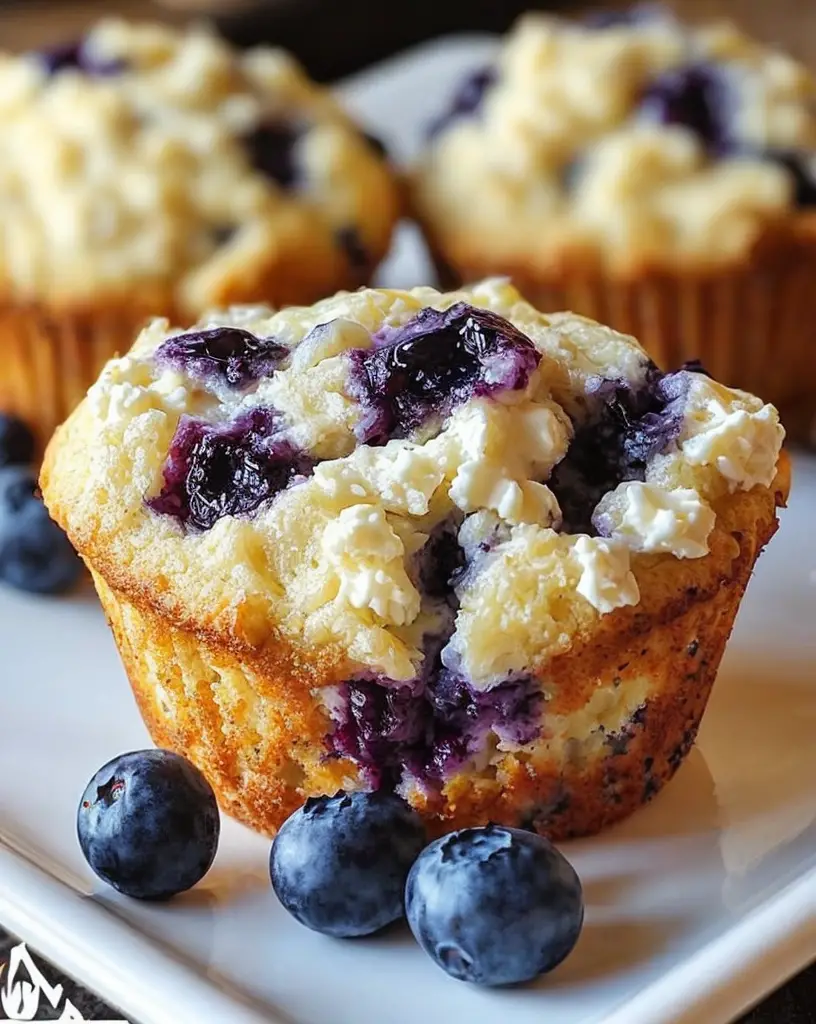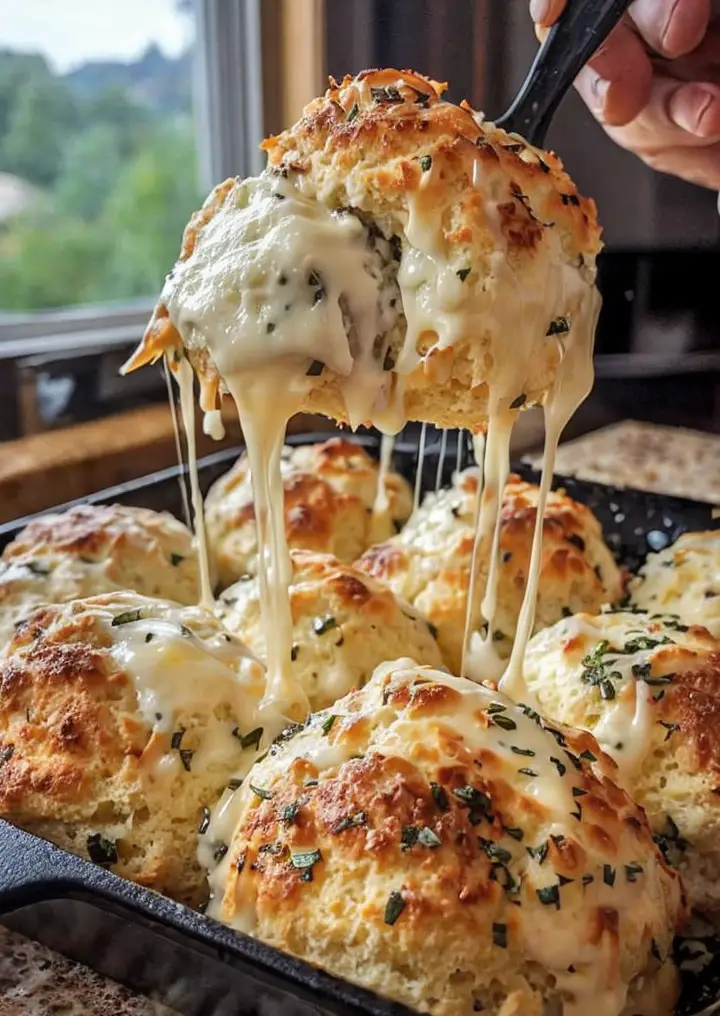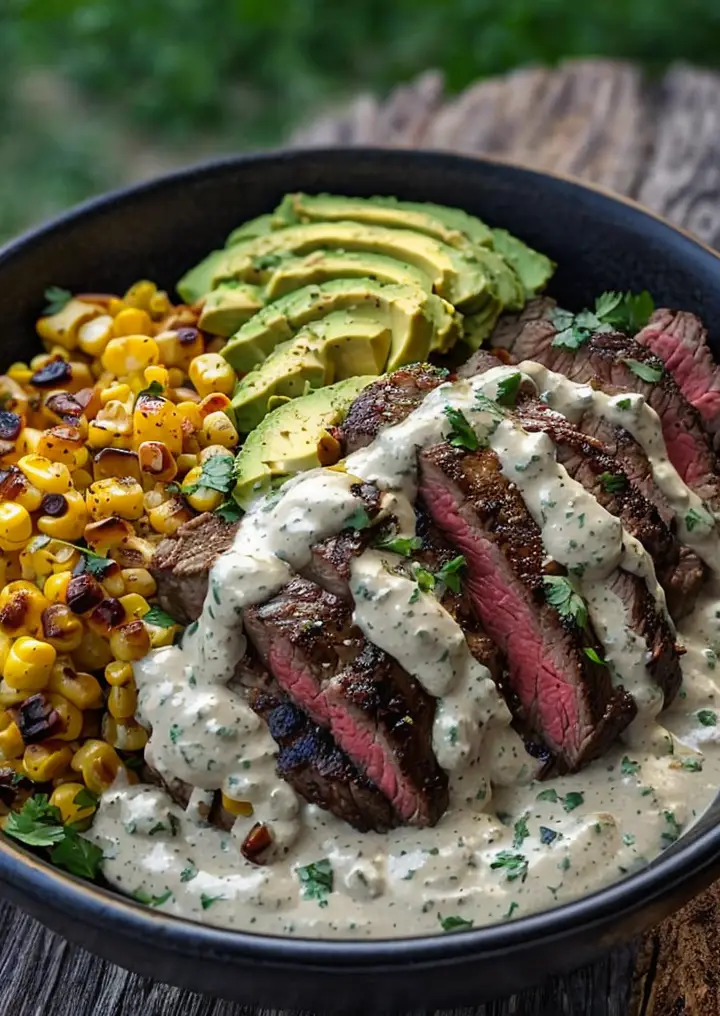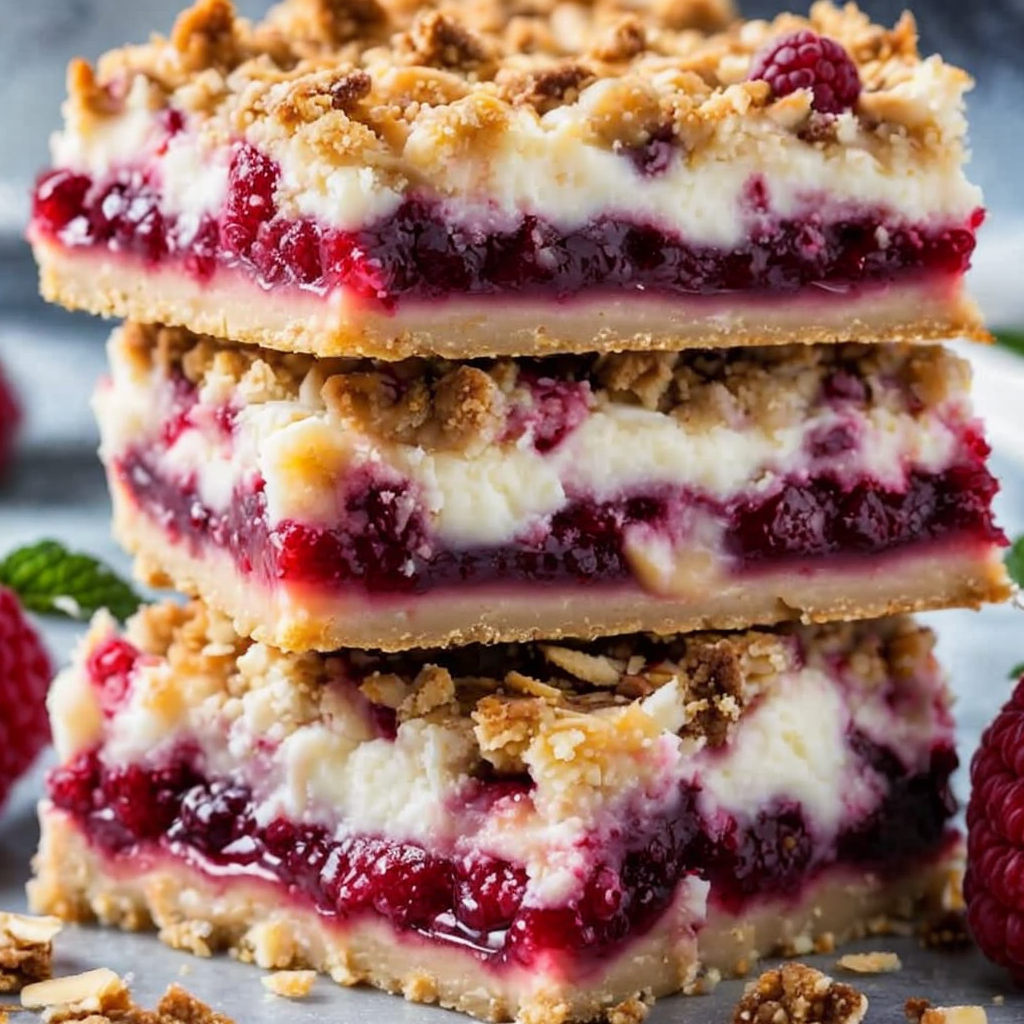Blueberry Cottage Cheese Muffins: A Healthy Breakfast Delight
Blueberry Cottage Cheese Muffins are the perfect way to kickstart your day with a nutritious and delicious breakfast. These muffins combine the rich, creamy texture of cottage cheese with the tart sweetness of fresh blueberries, creating a delightful balance that your taste buds will love. Every bite is fluffy and moist, making these muffins not only satisfying but also incredibly fulfilling, keeping you energized throughout your morning.
Imagine biting into a warm muffin, with the flavors of juicy blueberries bursting in your mouth, complemented by the mild tang of cottage cheese. This healthy take on a classic breakfast treat is not only nutritious but also quick and easy to prepare, making it a fantastic choice for busy mornings or leisurely brunch gatherings. Say goodbye to ordinary breakfasts and indulge in this delightful recipe that offers both taste and health benefits.
Quick Recipe Highlights
- Flavor Profile: These muffins strike the perfect balance between sweet and savory, with fresh blueberries providing natural sweetness against the creamy backdrop of cottage cheese.
- Texture: Enjoy a light and fluffy texture, enhanced by the addition of cottage cheese, which keeps the muffins moist without adding unnecessary fats.
- Aroma: Baking these muffins fills your kitchen with a warm and inviting aroma, combining hints of baked goods and fresh fruit
- Visual Appeal: With their beautiful indigo berry flecks and golden-brown tops, these muffins are pleasing to the eye and will entice anyone who sees them.
- Skill Level Needed: This is an easy recipe that requires minimal baking skills, making it perfect for novice bakers and seasoned chefs alike.
- Special Equipment: All you need is a muffin tin and a mixing bowl, making this a hassle-free recipe to tackle with everyday kitchen tools.
Recipe Overview
- Difficulty Level: This recipe is straightforward and easy to follow, making it accessible for all skill levels. The clear and concise steps guide you through the muffin-making process without any confusion.
- Category: Perfect for breakfast or a snack, these muffins can be enjoyed on-the-go, at a brunch gathering, or as a healthy treat any time of the day.
- Cuisine: Blending traditional American baking with a modern twist on healthy ingredients, this recipe embodies the best of both worlds.
- Cost: The ingredients for these muffins are budget-friendly, with costs typically around $10-$15 for a batch, depending on seasonal prices of blueberries.
- Season: Blueberries are in season during the summer months, making it the perfect fruity addition as they are fresh, sweet, and juicy; however, frozen blueberries work perfectly year-round.
- Occasion: These muffins are versatile for any occasion, whether it’s a casual morning at home, a picnic, or a brunch celebration.
Why You’ll Love This Recipe
These Blueberry Cottage Cheese Muffins stand out not only for their taste but also for their texture. The combination of cottage cheese ensures a moist crumb, while the blueberries add bursts of flavor that contrast beautifully with the tender muffin base. It’s the kind of breakfast treat that feels indulgent but is actually healthy, allowing you to enjoy each bite without guilt.
Convenience is another reason you’ll love this recipe. With just ten minutes of prep time, you can easily whip up these muffins while you tackle other morning routines. Pop them in the oven, and in no time, you’ll have a tray of freshly baked goodies ready to enjoy. This makes them a perfect choice for meal prep; make a batch on the weekend, and you’ll have easy grab-and-go breakfasts for the week ahead.
From a nutritional standpoint, these muffins are a powerhouse. Cottage cheese is a source of high-quality protein and calcium, while blueberries are packed with antioxidants and vitamins. Together, they create a well-balanced breakfast option that provides energy and supports overall health. It’s a delightful way to start your day, ensuring you stay fuller for longer.
Socially, these muffins become an instant hit among friends and family. Whether you serve them at a brunch gathering or share them with colleagues, they are sure to impress and spark conversations about healthier baking options, thus giving you a chance to engage and connect over food.
Cost-effectiveness is an additional plus. With readily available ingredients, you can create a delicious and healthy breakfast without breaking the bank. This makes these muffins not just a food choice but a smart economic one as well.
Historical Background and Cultural Significance
Blueberry muffins have roots in American cuisine, particularly linked to New England, where blueberries thrive in the wild. Historically, Native Americans would use blueberries in their cooking, a practice adopted and evolved over the centuries by European settlers. The inclusion of cottage cheese represents a modern adaptation as health trends shifted towards higher protein content in everyday baking.
The cultural significance of these muffins extends beyond their flavor; they symbolize the American spirit of innovation in the kitchen. Each recipe variation reflects regional ingredients and preferences, showcasing how traditional dishes can evolve while still honoring their roots.
Over time, the muffin has transformed from a simple baked good to a versatile accompaniment for various meals. With added ingredients like cottage cheese, it embraces the modern trend of healthy eating with a focus on nutritious components, fostering a culinary evolution that is both practical and appealing.
Regional variations of blueberry muffins can be found across the United States, often incorporating local flavors or ingredients. For instance, some versions may add lemon zest for brightness, while others might include spices like cinnamon or nutmeg, reflecting the diverse culinary landscape of the country.
Ingredient Deep Dive
Cottage cheese is a standout ingredient in this recipe. Its creamy texture serves as a binding agent while providing significant nutritional benefits, including a high protein content essential for muscle repair and growth. When selecting cottage cheese, opt for low-fat versions for a healthier choice. Store it in the fridge and consume it within a week for the best quality.
Blueberries are celebrated not just for their flavor but also for their impressive antioxidant profile. These berries help combat oxidative stress in the body and are a good source of vitamin C and fiber. When shopping for blueberries, look for firm, plump berries with a deep color. Store them in the refrigerator and wash them just before use to prolong freshness.
Flour is a foundational ingredient in muffins. Using whole wheat flour can enhance the nutritional value and texture, making the muffins even heartier. Always check for freshness by checking the expiration date on the packaging and store it in a cool, dry place. If whole wheat flour isn’t available, all-purpose flour can easily be substituted in this recipe.
Eggs act as a leavening agent, providing structure and moisture to the muffins. They are a source of protein and essential nutrients, contributing to the overall health benefits of this breakfast option. When selecting eggs, choose organic or free-range varieties for better quality. Store eggs in their original carton in the refrigerator for longer shelf life.
Common Mistakes to Avoid
- Overmixing the batter can lead to dense muffins. Mix until just incorporated to keep them light and fluffy.
- Not measuring the flour properly can alter the muffin’s texture. Use the spoon and level method for accuracy.
- Using frozen blueberries without thawing can tint the batter and create streaks. Toss them lightly in flour before mixing to prevent this.
- Baking muffins at the wrong temperature can result in undercooked centers or burnt tops. Always preheat the oven before baking.
- Skipping the cooling time can cause the muffins to become soggy. Allow them to cool in the pan for a few minutes before transferring them to a wire rack.
- Not using paper liners or greasing the muffin tin properly can lead to sticking. Always prepare the tin to make removal easy.
- Using too many ripe berries can make the muffins soggy. Keep to the measured amount for best results.
- Forgetting to check for doneness with a toothpick can result in underbaked muffins. Test them before removing from the oven.
- Leaving the batter to sit can cause it to lose its leavening power. Bake immediately for best texture.
- Using old ingredients, especially baking powder, can hinder rising. Always check the expiration date.
Essential Techniques
Mixing the batter properly is crucial for achieving the perfect texture. It’s vital to combine wet and dry ingredients without overmixing to maintain a light, airy muffin. Use a spatula to gently fold rather than a whisk to mix thoroughly while preserving the recipe’s integrity.
Properly measuring flour will greatly affect your muffin’s outcome. Flour can compact in its container, leading to using too much if scooped directly. Instead, use the spoon and level method: spoon flour into your measuring cup and level it off to ensure accuracy.
Baking at the right temperature is key to achieving a golden-brown exterior and moist interior. Preheating your oven ensures that your muffins rise and cook evenly, preventing dry or burnt bottoms.
Cooling muffins on a wire rack allows steam to escape, preventing sogginess. If left in the pan, moisture can accumulate and make your muffins lose their intended texture.
Using quality ingredients can significantly enhance flavor and health benefits. Fresh, high-quality blueberries and low-fat cottage cheese provide the taste and nutrients necessary for satisfying muffins.
Pro Tips for Perfect Blueberry Cottage Cheese Muffins
1. For extra flavor, add a sprinkle of cinnamon or nutmeg to the batter, which can enhance the bakery-like aroma while baking.
2. Make sure to use room-temperature ingredients; it helps the batter combine better and produces a more uniform texture in the muffins.
3. Experiment with different fruits, such as raspberries or strawberries, for a unique twist on the classic blueberry muffin.
4. Drizzle some honey or maple syrup on top before serving for an added touch of sweetness.
5. Consider adding a crunchy topping made from oats and a bit of brown sugar to give your muffins a delightful texture contrast.
6. Store leftover muffins in an airtight container to maintain their freshness, and enjoy them within three days for best taste.
7. To keep muffins moist, try including a splash of vanilla or almond extract in the batter for added depth of flavor.
8. If you’re a chocolate lover, fold in some mini chocolate chips along with the blueberries for a decadent treat.
Variations and Adaptations
For a regional twist, consider incorporating seasonal fruits like cranberries during the winter months. You can also add pumpkin puree to the batter in the fall for an autumn-inspired muffin that pairs wonderfully with warm spices.
If you’d like to make these muffins dairy-free, substitute cottage cheese with silken tofu or a dairy-free yogurt alternative. Doing this maintains the muffin’s moistness while aligning with dietary needs.
For those who prefer a low-carb option, consider using almond flour instead of regular flour. Adjusting the baking time may be necessary, but almond flour can create a delicious, nutty flavor profile.
Switching up the texture can enhance your muffin experience; try adding chopped nuts or seeds for an added crunch. Walnuts or pecans would pair excellently with the flavors in these muffins.
If you’re looking for a visually appealing presentation, consider icing the muffins with a light glaze made from powdered sugar and lemon juice, giving them a shiny and sweet finish.
Serving and Presentation Guide
When serving your Blueberry Cottage Cheese Muffins, consider using a tiered cake stand for an elegant display during brunches or get-togethers. This height variation not only presents the muffins beautifully but also makes it easy for guests to grab one.
Garnishing the muffins with a dusting of powdered sugar or a sprinkle of additional blueberries can enhance their appeal. Fresh mint leaves also serve as a vibrant, aesthetic addition that brings a touch of freshness to the presentation.
For traditional accompaniments, serve these muffins with a dollop of Greek yogurt or low-sugar jam to complement their flavor. Pairing with a side of fresh fruit creates a well-rounded breakfast plate.
Temperature plays a significant role in enjoyment, so serve the muffins warm or at room temperature to maximize both flavor and texture. Freshly baked muffins will always impress, so sharing them shortly after they come out of the oven can elevate the experience.
Lastly, portion control is essential. These muffins are perfect for individual servings, but if presenting on a platter, consider cutting larger muffins in half to allow guests to sample different flavors or enjoy them alongside other dishes.
Wine and Beverage Pairing
Pairing these Blueberry Cottage Cheese Muffins with beverages can elevate your breakfast table. For a touch of sophistication, consider a chilled sparkling wine or Prosecco that complements the sweetness of the muffins without being overly sweet.
For non-alcoholic options, a refreshing glass of freshly squeezed orange juice or berry smoothie can balance the flavor profile, creating a fruity symphony on your palate. Coffee is another classic option; a smooth medium roast with hints of chocolate can beautifully enhance the muffin experience.
When considering temperature, serving chilled beverages with warm muffins creates a delightful contrast. Alternately, if you prefer hot drinks, a spiced chai or herbal tea can offer a warming note that complements the muffins’ dynamic flavors and aromas.
Storage and Shelf Life
To preserve the freshness of your Blueberry Cottage Cheese Muffins, store them in an airtight container at room temperature for up to three days. If you want to keep them longer, consider refrigerating them, where they can last up to a week.
For freezing, place the muffins in a freezer-safe bag or container, separating layers with wax paper to avoid sticking. They can be stored in the freezer for up to three months. When ready to enjoy, thaw them in the refrigerator overnight or warm them in the microwave for a quick snack.
Signs of spoilage include an off smell or visible mold spots. If you notice any of these, it’s best to discard the muffins to ensure safety.
Reheating instructions involve placing the muffins in a microwave for 10-second increments until warmed through, or you can reheat them in a preheated oven set to 350°F for 5-10 minutes, allowing the muffins to regain their fresh-baked texture.
Make Ahead Strategies
For busy mornings, consider prepping the batter a day in advance. Combine the dry ingredients and wet ingredients separately, store them in the fridge, and mix them just before baking. This quick strategy saves valuable time without sacrificing flavor.
You can also prepare the muffins and store them raw in the muffin tin, covered tightly with plastic wrap, allowing you to bake them fresh the next morning. This gives you the pleasure of freshly baked muffins with minimal effort.
Assessing quality impact is vital; muffins can be made two days ahead without significantly affecting flavor or texture. For the best results, ensure that they are stored properly in an airtight container.
When it comes to assembly tips, pre-measuring ingredients simplifies the process. Organizing your items and tools beforehand can streamline your baking experience, especially during busy weekends.
Incorporating fresh elements such as butter or fresh fruits adds a delightful touch. If serving muffins later, add toppings or spreads just before serving to maintain their attractive appearance.
Scaling Instructions
Scaling your Blueberry Cottage Cheese Muffins recipe is simple. To halve the recipe, it’s most important to adjust your baking time down slightly, as smaller batches often cook faster.
If doubling or tripling, consider using multiple muffin tins or baking in batches, monitoring the times closely, as adding more heat may impact even cooking. Ensure you have enough oven space to accommodate any new kitchenware as needed.
Equipment adjustments may be necessary, and using a mixer can save time when preparing batter in larger quantities. Just ensure that your mixer bowl is large enough to avoid spills.
Timing modifications should account for increased volume; larger batches could take a few minutes longer in the oven. It’s essential to check for doneness with a toothpick before removing from the oven.
When storing larger quantities, utilize larger containers or bags designed for bulk storage, allowing for easy access without compromising freshness.
Nutritional Deep Dive
These Blueberry Cottage Cheese Muffins offer a balanced nutritional profile. A single muffin typically contains around 150 calories, with a good portion attributed to protein from the cottage cheese. This makes them not only a satisfying treat but also aids muscle recovery and overall well-being.
Micronutrient analysis reveals that every muffin is a good source of calcium and vitamin C, contributing to your daily nutritional needs. Blueberries are particularly rich in antioxidants, which support heart health and cognitive function, enhancing the muffins’ health profile.
Enjoying these muffins can lead to various health benefits, including sustained energy release thanks to the combination of carbohydrates, protein, and fiber. This trio promotes satiety, indirectly assisting with weight management.
When considering dietary needs, these muffins can easily fit into a variety of nutrition plans. Adjusting ingredients can find a place not just in health-conscious diets but for those seeking tasty, guilt-free indulgences.
Portion analysis can help maintain weight management goals; enjoying one or two muffins alongside yogurt or fruit can create a satisfying breakfast without feeling deprived.
Dietary Adaptations
For those needing gluten-free options, substitute all-purpose flour with almond flour or a gluten-free baking mix. This adaptation maintains the muffins’ integrity while catering to specific dietary needs.
Dairy-free enthusiasts can swap cottage cheese with plant-based cheese or a dairy-free yogurt alternative, allowing everyone to enjoy these muffins without concern for lactose issues.
Vegan diners can create a plant-based version by substituting the eggs with flax eggs (1 tablespoon of flaxseed meal mixed with 2.5 tablespoons of water). This provides the binding needed for the muffins while remaining completely cruelty-free.
Low-carb dieters can leverage coconut flour or a low-carb flour blend while adjusting the liquid ratios slightly to achieve the desired texture. Always ensure to account for different absorption rates in flour substitution.
For a keto adaptation, reduce the amount of fruit or opt for berries lower in carbohydrates. Adjustments in sweetness may also be necessary, using keto-approved sweeteners for flavor without the carbs.
Paleo dieters may adapt the muffins by swapping flour for almond meal while omitting refined sugars and incorporating natural sweeteners like honey or maple syrup in moderation.
Low-FODMAP dieters should keep track of fruit inclusions, avoiding excess amounts, and substituting cottage cheese with lactose-free options while ensuring that other ingredients meet dietary standards.
Troubleshooting Guide
If you encounter texture issues, such as muffins being too dense, this could be due to overmixing or excess liquid. Ensure you mix until just combined and measure flour accurately using the spoon and level method.
Flavor balance may occasionally lean towards blandness if insufficient sweetener is used. Adjust sugar or consider incorporating spices or extracts to enhance flavors without overwhelming the muffin’s primary taste.
Temperature problems, such as burnt tops or raw centers, can result from oven calibration discrepancies. Check your oven accuracy and adjust baking times based on visual cues for even cooking.
Equipment challenges might arise if your muffin tins are old or poorly coated. If stuck, consider switching to silicone muffin liners or greasing thoroughly to ensure easy release.
Ingredient substitutions can change expected results dramatically. Familiarize yourself with how each ingredient impacts texture and flavor if experimenting with alternatives.
Timing concerns are common when adjustments are made to batch sizes. Monitor smaller or larger batches closely as baking times may differ, impacting the muffin outcome.
Recipe Success Stories
Feedback from the community surrounding Blueberry Cottage Cheese Muffins has been overwhelmingly positive. Readers have attested to their moist texture and delightful flavor, often sharing stories of how they prepared them for family gatherings or weekend brunches.
Many individuals have successfully adapted the recipe. They experiment with different fruits, nuts, or spices, sharing their modifications and how these new takes have delighted their friends and family.
Readers often highlight the health benefits associated with these muffins, particularly how they help in maintaining a balanced diet while indulging in something enjoyable. Many have expressed excitement in finding a breakfast that feels indulgent but is incredibly nutritious.
Photography tips shared by readers reveal that taking bright, natural light pictures of these muffins enhances their appeal on social media, encouraging more people to try the recipe themselves.
Adaptation stories are common, with families enjoying these muffins so much they became a staple at home. Creative variations include adding chocolate chips or seasonal ingredients, making the joy of baking continuous.
Frequently Asked Questions
Can I use frozen blueberries in this recipe?
Yes, you can use frozen blueberries, but make sure to toss them with a bit of flour before mixing them into the batter. This helps prevent them from sinking to the bottom while baking.
How do I make the muffins fluffier?
Ensure that you avoid overmixing the batter, as this can lead to dense muffins. Also, make sure all your ingredients are at room temperature to promote a lighter texture.
Can I substitute the cottage cheese?
Yes, you can substitute cottage cheese with Greek yogurt or a plant-based yogurt alternative if you want a dairy-free option. Just be aware that this might slightly alter the flavor and texture.
How do I store leftover muffins?
Store them in an airtight container at room temperature for up to three days. For a longer shelf life, you can refrigerate or freeze them as described in the storage section.
Can I sweeten these muffins more?
Absolutely! You can add more sugar or substitute it with honey or maple syrup according to your sweetness preference. Just be mindful of the consistency of your batter when making adjustments.
Can I use whole wheat flour instead?
Yes, using whole wheat flour is a great way to add extra nutrients and fiber. Just note that this may result in a denser muffin, and you may want to adjust the liquid slightly.
How long do they take to bake?
Baking time for these muffins is approximately 20-25 minutes, but always check for doneness with a toothpick inserted in the center; it should come out clean.
Can I add nuts or seeds to the muffins?
Certainly! Adding nuts or seeds not only enhances the flavor but also introduces additional texture and nutritional value. Just ensure they are evenly distributed in the batter.
How do I prevent the muffins from sticking to the pan?
Grease your muffin tin well or use paper liners for easy removal. If using a nonstick pan, this can help reduce sticking issues.
Can I double this recipe?
Yes, this recipe can easily be doubled. Just ensure you have enough mixing space and muffin tins, and consider checking for doneness a few minutes earlier in case of larger batches.
Can kids help with this recipe?
This is a fun recipe for kids to get involved in! They can help mix the ingredients, fill the muffin cups, and, most importantly, enjoy eating the final product.
Additional Resources
If you’re looking to enhance your baking skills, consider checking out related recipes that leverage similar healthy ingredients or techniques. Look into technique guides for muffin-making, which can provide additional tips for improving your baked goods.
Learning more about the nutritional properties of cottage cheese or blueberries will help deepen your understanding of how these ingredients benefit your health and wellness.
For those interested in equipment recommendations, exploring high-quality muffin tins can significantly impact your baking results. Finding seasonal variations with fruits or spices can help you adapt this muffin recipe throughout the year.
Join the Conversation
Sharing your experience on social media can create a dialogue within the cooking community. Snap a photo of your baked Blueberry Cottage Cheese Muffins and share the love by tagging friends and family.
Photography tips can help other readers appreciate your unique touch; consider highlighting any variations or special techniques you used in your baking process.
Encouraging recipe reviews adds to community engagement, allowing others to feel more connected to the recipe and each other. Sharing feedback fosters a warm, interactive atmosphere where everyone can learn and grow as bakers.
Try to create a space for sharing recipe variations, as many people love to put their twist on classics. Engaging with others around baking ideas can inspire new creations and enhance everyone’s culinary journey.
The Recipe
Blueberry Cottage Cheese Muffins
Serves: 12
Prep Time: 10 mins
Cook Time: 20 mins
Total Time: 30 mins
Kitchen Equipment Needed
- Muffin tin
- Mixing bowls
- Measuring cups and spoons
- Whisk or spatula
- Toothpick (for testing doneness)
Ingredients
- 1 cup cottage cheese
- 1/2 cup sugar
- 1/4 cup vegetable oil
- 2 large eggs
- 1 teaspoon vanilla extract
- 1 cup all-purpose flour
- 1/2 cup whole wheat flour
- 1 tablespoon baking powder
- 1/2 teaspoon salt
- 1 cup fresh blueberries
Directions
- Preheat your oven to 350°F (175°C) and grease a muffin tin or line with muffin liners.
- In a mixing bowl, combine the cottage cheese, sugar, vegetable oil, eggs, and vanilla extract. Mix well until combined.
- In another bowl, whisk together the all-purpose flour, whole wheat flour, baking powder, and salt.
- Gradually add the dry ingredients to the wet ingredients, mixing until just combined. Be careful not to overmix.
- Gently fold in the blueberries.
- Evenly distribute the batter into the prepared muffin tin, filling each cup about two-thirds full.
- Bake for 20-25 minutes, or until a toothpick inserted into the center comes out clean.
- Allow the muffins to cool in the pan for a few minutes before transferring to a wire rack to cool completely.
Recipe Notes
- For extra sweetness, you can add a tablespoon of honey to the batter if desired.
- Feel free to substitute other berries depending on what you have on hand.
- Storage: Keep muffins in an airtight container in the fridge for up to a week, or freeze them for up to three months.
- Reheat in the microwave or oven for best results.




